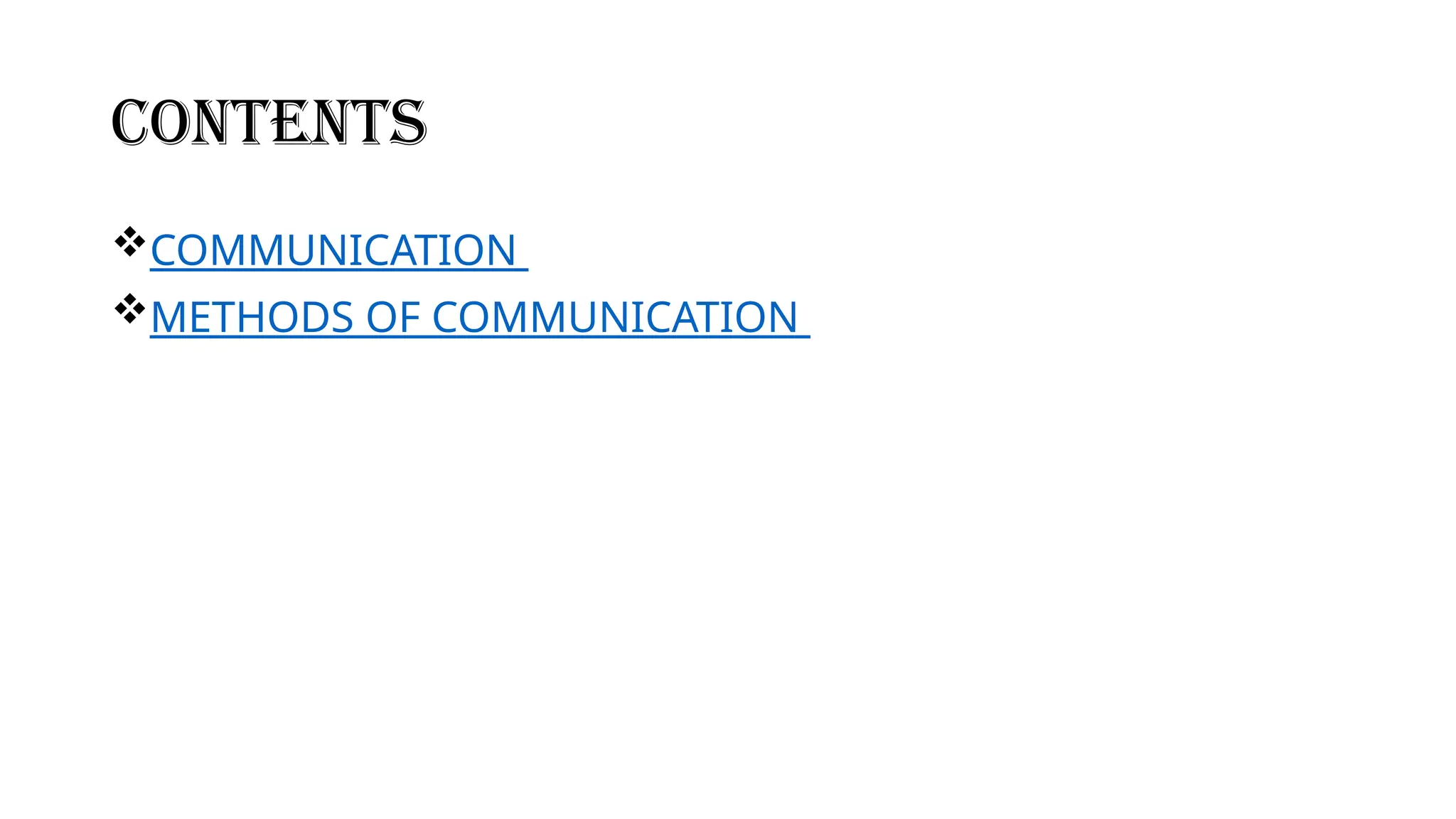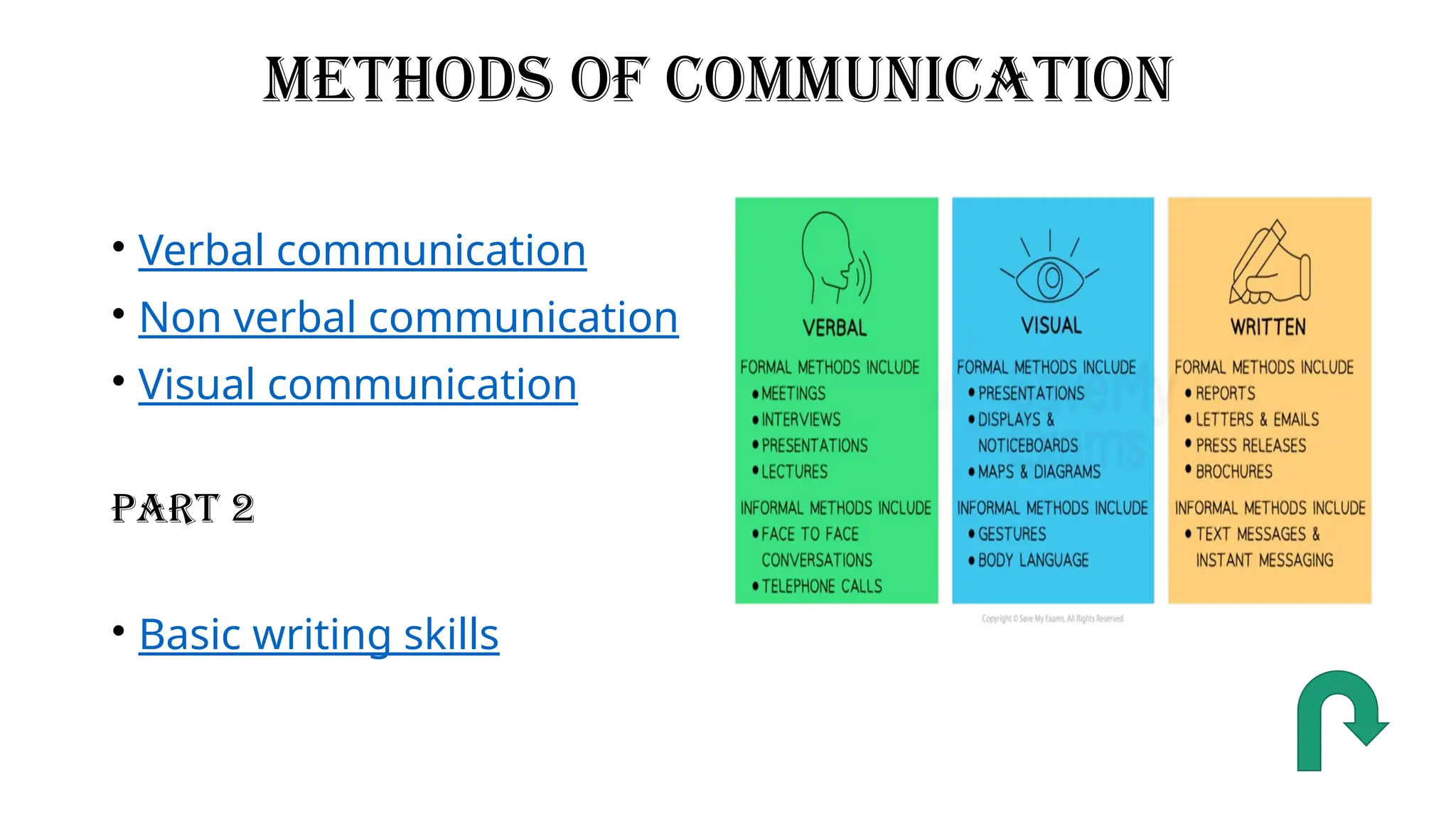The document outlines the topic of communication and methods of communication for a 9th-grade information technology class for the session 2024-2025. It covers the definition of communication, its importance, the communication process, elements involved in the communication cycle, and various perspectives and factors affecting communication. Additionally, it describes different methods of communication including verbal, non-verbal, and visual communication, along with basic writing skills.













